- +30 213 003 7600
- +30 213 003 7600
- info@hellagrolip.com
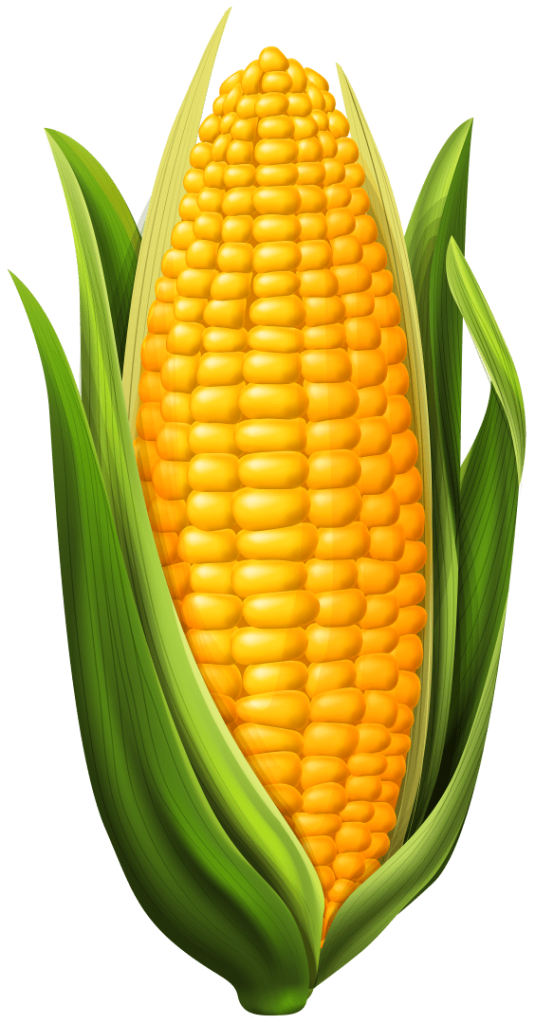
Corn thrives in many types of soil. The soils considered ideal are fine texture, deep, and fertile silty loam and clay loam soils with abundant organic matter, where corn can utilize nutrients and moisture to the maximum and achieve high yields.
Heavy soils, which retain water, and highly saline soils are unsuitable for cultivation.
Light sandy soils do not retain sufficient moisture, therefore produce poor yields and require increased fertilizing and irrigation.
Regarding acidity, it grows regularly in a pH range from 5 to 8, ideally within 6,2-6,8.
Due to its high productivity and fast growth, corn has high requirements in nutrients, and within a very short time frame. This means that it is a crop that depletes the reserves in the soil; therefore, its requirements in nutrients should be covered so that high yields of good quality are secured.:
| Fertilization units to produce 16 t kernel per hectare | |||||
|---|---|---|---|---|---|
| Type | (N) | (P2O5) | (K2O) | (S) | (Zn) |
| Corn | 286 | 104 | 193 | 31 | 5,1 |
Nitrogen is necessary for the healthy and fast growth of young plants, the photosynthetic activity in the leaves, and the production of proteins and carbohydrates that the plant will need at every stage of growth.
Phosphorus boosts the development of the root system, contributes to the strong establishment of the crops, increases nutrient and water uptake, enhances pollen fertility, and provides the necessary energy for all the metabolic processes of growth and production.
Potassium favors the mechanical support of the frame of the plants, boosts root and leaf growth, regulates the utilization of water, and boosts resistance against diseases and adverse weather conditions. It is a necessary element for the production of carbohydrates in the leaves and their migration to the fruits during the “filling” phase.
Zinc boosts sprouting and root and leaf growth, increases the height of the plants and the size of the leaf area, enhances pollination, and participates as a catalyst in the formation of many important enzymes.
Initially, plant growth is based on the substances stored in the seed, and in part on the radicle, which supplies the seedlings mainly with water and also with nutrients.
After the 2nd leaf has emerged the plants become autonomous, as the nodal roots gradually replace the radicles and become the ones to supply the plants, while the leaves start to photosynthesize.
Towards the end of this period (3rd-6th leaf), the nodes which will develop into the male inflorescence (tassel) and the ear shoots are formed, and the number of rows which shall include the kernels on each cob is set.
Although the requirements of the crop are low at this stage, the limited root system of the plants makes utilizing the nutrients in the soil difficult.
This is why supplying the necessary nutrients through basic fertilizing early on and close to the roots plays a determining part in the growth and yields of the crop later on.
At this stage the growth of the root system, the formation of new roots, the elongation of the stem, and the emergence of new leaves are accelerated. The plants reach their final height, and the formation of their reproductive organs takes place internally, which will determine the yields of the crop.
Between the 7th and the 12th leaves, ear shoots appear on the axils of the leaves, and the upper two ear shoots shall develop into harvestable ears. By the 12th leaf, the number of rows on which the kernels will grow is set, and the ovules are formed on the rows.
By the 17th leaf, both the highest possible number of kernels that the plant can produce and the final size each ear shoot will reach are set, thus irreversibly shaping the production potential of the crop.
The vegetative stage is completed with the full emergence of the tassel at the top of the plant and the onset of flowering.
During this period of fast growth, the needs of the crops in water and nutrients are maximized. Over 2/3 of Nitrogen (N), 3/4 του Potassium (K), and 50% of Phosphorus (P) have been absorbed by the onset of flowering.
After the 8th leaf has emerged, lack of water and any of the three aforementioned nutrients – particularly Nitrogen – arrests plant growth, limits the number of the leaves and the leaf area, as well as the size of the cob and the number of kernels, and dramatically reduces the production.
Top fertilizing with Nitrogen at the stage between the 5th and 7th leaves is absolutely necessary, and it constitutes one of the most important cultivation practices for crop yields.
The reproductive stage begins with the release of pollen from the tassel and the emergence of silks at the sides of the cob, and it is completed after pollination, with the onset of kernel growth in size and weight.
Once pollination has been completed, all the organs of the plant work to “fill” the growing kernels, fast increasing their size and weight. At first, large quantities of sugars and proteins migrate from the leaves and accumulate in the kernels, and then they turn into starch, which gradually solidifies during kernel growth.
Even before the tassel has fully emerged, for the duration of flowering and at the early stages of kernel growth, the requirements of the plants in nutrients and water are great.
From flowering until maturity, the plants continue to absorb 1/3 of Nitrogen (N) and Zinc (Zn) and over 1/2 of Phosphorus (P), which they need throughout their growth cycle.
At the stages of flowering and fruit setting, lack of water will lead to pollen desiccation, delayed silking, deficient pollination, and a smaller number of kernels, which will in turn lead to significantly reduced yields (up to 50 %).
After fruit setting, at the early stages of fruit growth in particular, lack of nutrients and water leads to a reduced size and weight of the kernels, and often even their shedding, which significantly reduce yields.
The requirements in Phosphorus (P) and Zinc (Zn) during this period should be adequately covered by the reserves from basic fertilizing, while the requirements in Nitrogen (N) should be covered by top fertilizing at the stage between the 5th and 7th leaves.
The crops should be irrigated regularly up to shortly before the kernels have hardened.
Corn maturity follows, with the kernels becoming dry and hard. A sign of normal maturity is the formation of a black layer at the tip of each kernel, where the cells die and prevent further starch accumulation in the core.
Basic fertilizing has a determining effect on crop yields. It supplies the plants with nutrients which are necessary for the growth of the root system, vegetative growth, and flowering. Most importantly, it creates the reserves plants will need at the later crucial stages of fruiting, particularly in Phosphorus and Potassium.
Dosage:
The Nitrogen contained in basic fertilizing needs to be in Ammoniacal form, be it simple or stabilized, so that it does not leach into the deeper layers of the soil and it is always available to the crops to ensure the strong and fast growth of the roots, young plants, and leaves.
Localized linear application of a quantity (8-14kg) of a starter fertilizer (NutrActive FerroZinc), together with the seed, increases the uptake of the slow moving Phosphorus and Potassium at the early stages of establishment, as the root system has not yet fully developed and has difficulty supplying the crops adequately due to the low temperatures in the soil.
The remaining amount of basic fertilizing should be integrated throughout the field. The use of complex stabilized fertilizers (NutrActive), which protect Ammoniacal Nitrogen or specific fertilizers with nanopolymer technology, which prevent the interaction of the nutrient elements of the fertilizer with the components of the soil, minimize losses and ensure in a short period of time the good establishment of plants in the soil and the early and rapid development of shoots and leaves, is recommended.
| Corn fertilizing | ||
|---|---|---|
| Type of Fertilizer | Stage of application | Dosage (kg/ha.) |
NutrActive plus 24-6-7 (+12) +0,3Zn | Basic fertilization | 600 – 800 kg |
* The dosages mentioned are indicative. Regarding the fertilizing of crops, one should take into account the advice of local agronomists.
The goal is to cover the needs of the crops in nutrients necessary for vegetative growth, the formation of the reproductive organs, healthy flowering and fruit setting, and the filling of the seeds.
Time of application is crucial to the development of the crops; it should always be applied before the emergence of the 8th leaf, ideally between the 5th and 7th leaves.
Dosage:
The use of Nitric fertilizers, which boost vegetative growth and increase yields, and Nitrogen fertilizers with Ammoniacal Nitrogen in simple or “stabilized form”, which reduce Nitrogen losses from the soil and secure an adequate supply to the plants until the end of cultivation, is recommended.
| Corn fertilizing | ||
|---|---|---|
| Type of Fertilizer | Stage of application | Dosage (kg/ha.) |
NutrActive 27N 27-0-0 (+27) | Top-dressing fertilization | 400 – 600 kg |
* The dosages mentioned are indicative. Regarding the fertilizing of crops, one should take into account the advice of local agronomists.
Basic fertilizers
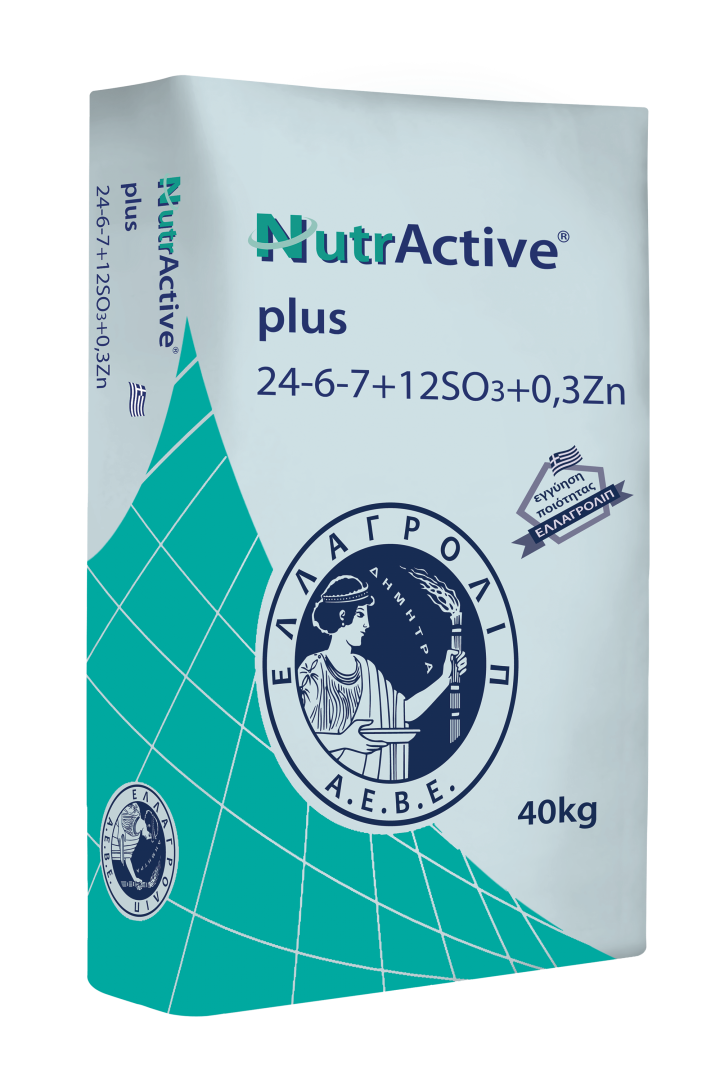
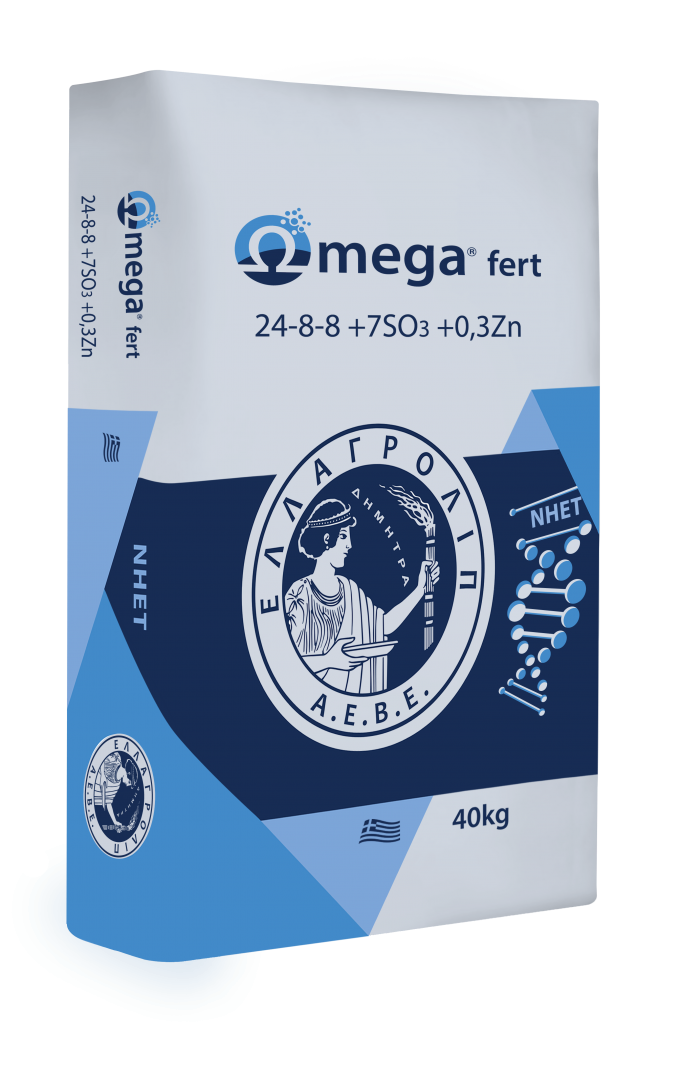
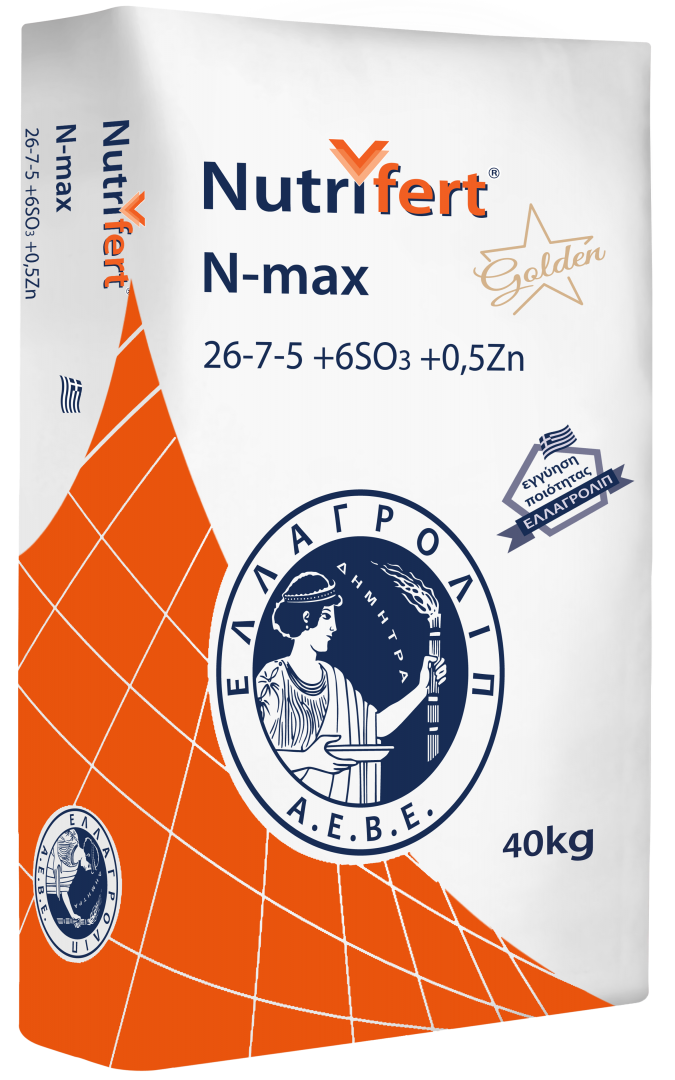
Top-dressing fertilizers
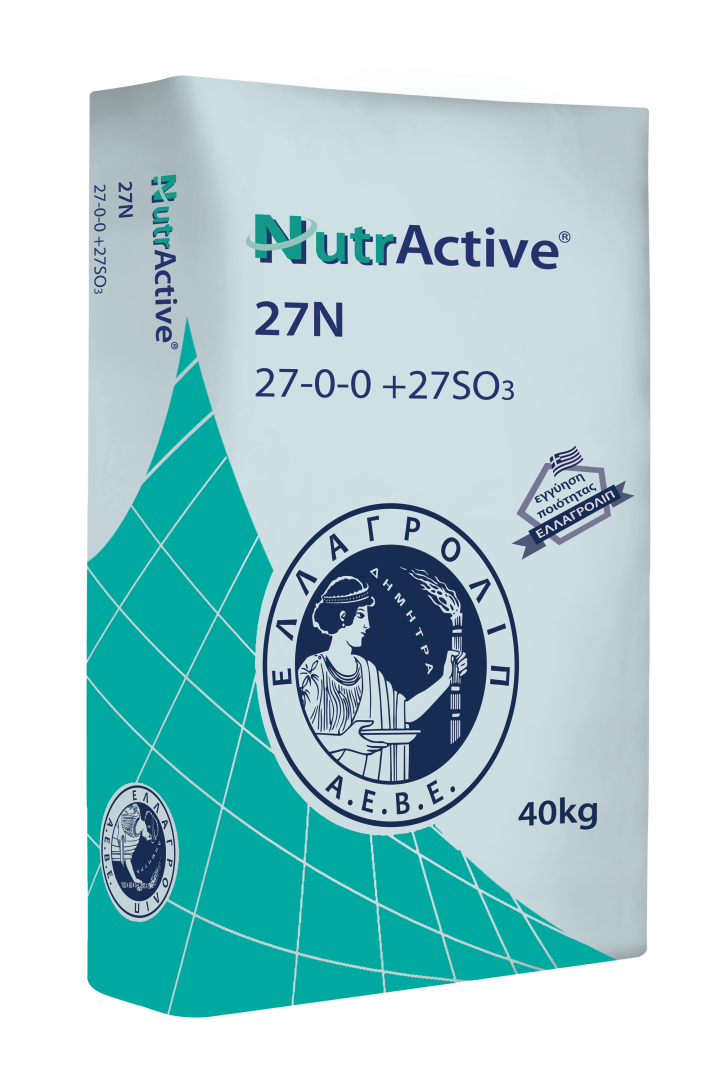
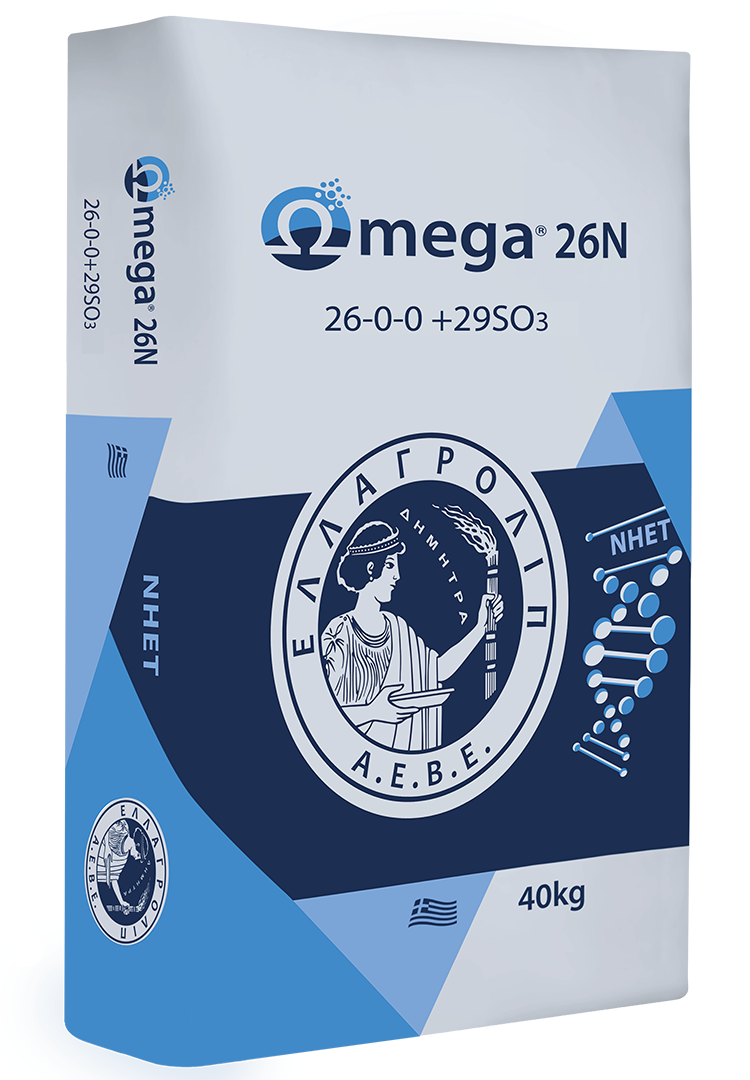
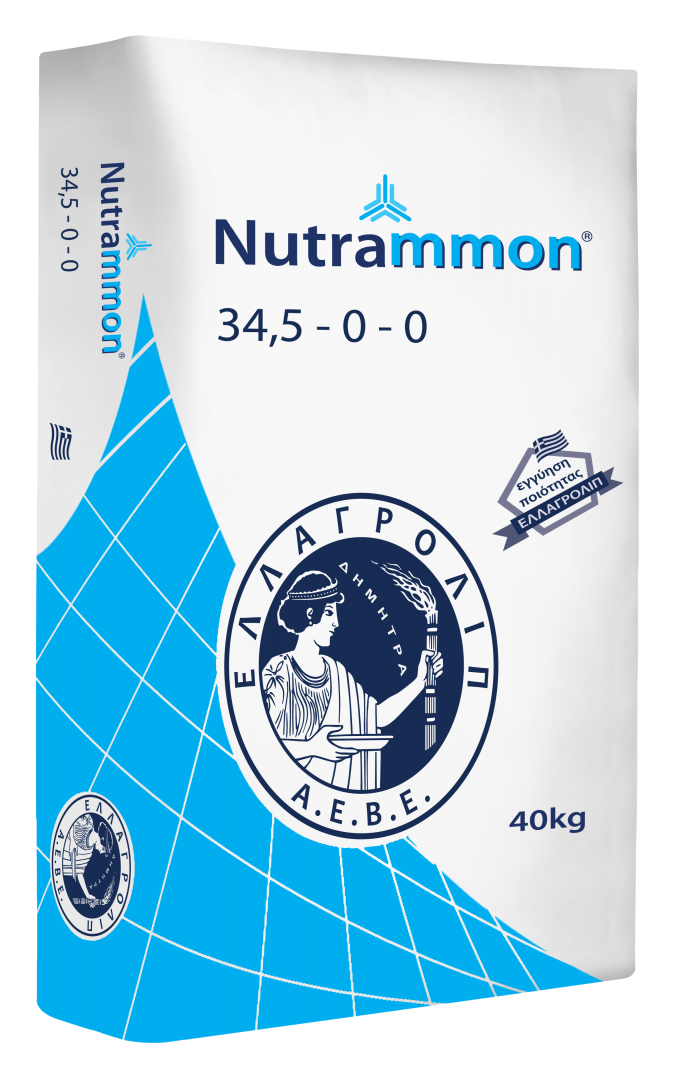
Corn thrives in many types of soil. The soils considered ideal are fine texture, deep, and fertile silty loam and clay loam soils with abundant organic matter, where corn can utilize nutrients and moisture to the maximum and achieve high yields.
Heavy soils, which retain water, and highly saline soils are unsuitable for cultivation.
Light sandy soils do not retain sufficient moisture, therefore produce poor yields and require increased fertilizing and irrigation.
Regarding acidity, it grows regularly in a pH range from 5 to 8, ideally within 6,2-6,8.
Due to its high productivity and fast growth, corn has high requirements in nutrients, and within a very short time frame. This means that it is a crop that depletes the reserves in the soil; therefore, its requirements in nutrients should be covered so that high yields of good quality are secured.:
| Fertilization units to produce 16 t kernel per hectare | |||||
|---|---|---|---|---|---|
| Type | (N) | (P2O5) | (K2O) | (S) | (Zn) |
| Corn | 286 | 104 | 193 | 31 | 5,1 |
Nitrogen is necessary for the healthy and fast growth of young plants, the photosynthetic activity in the leaves, and the production of proteins and carbohydrates that the plant will need at every stage of growth.
Phosphorus boosts the development of the root system, contributes to the strong establishment of the crops, increases nutrient and water uptake, enhances pollen fertility, and provides the necessary energy for all the metabolic processes of growth and production.
Potassium favors the mechanical support of the frame of the plants, boosts root and leaf growth, regulates the utilization of water, and boosts resistance against diseases and adverse weather conditions. It is a necessary element for the production of carbohydrates in the leaves and their migration to the fruits during the “filling” phase.
Zinc boosts sprouting and root and leaf growth, increases the height of the plants and the size of the leaf area, enhances pollination, and participates as a catalyst in the formation of many important enzymes.
Initially, plant growth is based on the substances stored in the seed, and in part on the radicle, which supplies the seedlings mainly with water and also with nutrients.
After the 2nd leaf has emerged the plants become autonomous, as the nodal roots gradually replace the radicles and become the ones to supply the plants, while the leaves start to photosynthesize.
Towards the end of this period (3rd-6th leaf), the nodes which will develop into the male inflorescence (tassel) and the ear shoots are formed, and the number of rows which shall include the kernels on each cob is set.
Although the requirements of the crop are low at this stage, the limited root system of the plants makes utilizing the nutrients in the soil difficult.
This is why supplying the necessary nutrients through basic fertilizing early on and close to the roots plays a determining part in the growth and yields of the crop later on.
At this stage the growth of the root system, the formation of new roots, the elongation of the stem, and the emergence of new leaves are accelerated. The plants reach their final height, and the formation of their reproductive organs takes place internally, which will determine the yields of the crop.
Between the 7th and the 12th leaves, ear shoots appear on the axils of the leaves, and the upper two ear shoots shall develop into harvestable ears. By the 12th leaf, the number of rows on which the kernels will grow is set, and the ovules are formed on the rows.
By the 17th leaf, both the highest possible number of kernels that the plant can produce and the final size each ear shoot will reach are set, thus irreversibly shaping the production potential of the crop.
The vegetative stage is completed with the full emergence of the tassel at the top of the plant and the onset of flowering.
During this period of fast growth, the needs of the crops in water and nutrients are maximized. Over 2/3 of Nitrogen (N), 3/4 του Potassium (K), and 50% of Phosphorus (P) have been absorbed by the onset of flowering.
After the 8th leaf has emerged, lack of water and any of the three aforementioned nutrients – particularly Nitrogen – arrests plant growth, limits the number of the leaves and the leaf area, as well as the size of the cob and the number of kernels, and dramatically reduces the production.
Top fertilizing with Nitrogen at the stage between the 5th and 7th leaves is absolutely necessary, and it constitutes one of the most important cultivation practices for crop yields.
The reproductive stage begins with the release of pollen from the tassel and the emergence of silks at the sides of the cob, and it is completed after pollination, with the onset of kernel growth in size and weight.
Once pollination has been completed, all the organs of the plant work to “fill” the growing kernels, fast increasing their size and weight. At first, large quantities of sugars and proteins migrate from the leaves and accumulate in the kernels, and then they turn into starch, which gradually solidifies during kernel growth.
Even before the tassel has fully emerged, for the duration of flowering and at the early stages of kernel growth, the requirements of the plants in nutrients and water are great.
From flowering until maturity, the plants continue to absorb 1/3 of Nitrogen (N) and Zinc (Zn) and over 1/2 of Phosphorus (P), which they need throughout their growth cycle.
At the stages of flowering and fruit setting, lack of water will lead to pollen desiccation, delayed silking, deficient pollination, and a smaller number of kernels, which will in turn lead to significantly reduced yields (up to 50 %).
After fruit setting, at the early stages of fruit growth in particular, lack of nutrients and water leads to a reduced size and weight of the kernels, and often even their shedding, which significantly reduce yields.
The requirements in Phosphorus (P) and Zinc (Zn) during this period should be adequately covered by the reserves from basic fertilizing, while the requirements in Nitrogen (N) should be covered by top fertilizing at the stage between the 5th and 7th leaves.
The crops should be irrigated regularly up to shortly before the kernels have hardened.
Corn maturity follows, with the kernels becoming dry and hard. A sign of normal maturity is the formation of a black layer at the tip of each kernel, where the cells die and prevent further starch accumulation in the core.
Basic fertilizing has a determining effect on crop yields. It supplies the plants with nutrients which are necessary for the growth of the root system, vegetative growth, and flowering. Most importantly, it creates the reserves plants will need at the later crucial stages of fruiting, particularly in Phosphorus and Potassium.
Dosage:
The Nitrogen contained in basic fertilizing needs to be in Ammoniacal form, be it simple or stabilized, so that it does not leach into the deeper layers of the soil and it is always available to the crops to ensure the strong and fast growth of the roots, young plants, and leaves.
Localized linear application of a quantity (8-14kg) of a starter fertilizer (NutrActive FerroZinc), together with the seed, increases the uptake of the slow moving Phosphorus and Potassium at the early stages of establishment, as the root system has not yet fully developed and has difficulty supplying the crops adequately due to the low temperatures in the soil.
The remaining amount of basic fertilizing should be integrated throughout the field. The use of complex stabilized fertilizers (NutrActive), which protect Ammoniacal Nitrogen or specific fertilizers with nanopolymer technology, which prevent the interaction of the nutrient elements of the fertilizer with the components of the soil, minimize losses and ensure in a short period of time the good establishment of plants in the soil and the early and rapid development of shoots and leaves, is recommended.
| Corn fertilizing | ||
|---|---|---|
| Type of Fertilizer | Stage of application | Dosage (kg/ha.) |
NutrActive plus 24-6-7 (+12) +0,3Zn | Basic fertilization | 600 – 800 kg |
* The dosages mentioned are indicative. Regarding the fertilizing of crops, one should take into account the advice of local agronomists.
The goal is to cover the needs of the crops in nutrients necessary for vegetative growth, the formation of the reproductive organs, healthy flowering and fruit setting, and the filling of the seeds.
Time of application is crucial to the development of the crops; it should always be applied before the emergence of the 8th leaf, ideally between the 5th and 7th leaves.
Dosage:
The use of Nitric fertilizers, which boost vegetative growth and increase yields, and Nitrogen fertilizers with Ammoniacal Nitrogen in simple or “stabilized form”, which reduce Nitrogen losses from the soil and secure an adequate supply to the plants until the end of cultivation, is recommended.
| Corn fertilizing | ||
|---|---|---|
| Type of Fertilizer | Stage of application | Dosage (kg/ha.) |
NutrActive 27N 27-0-0 (+27) | Top-dressing fertilization | 400 – 600 kg |
* The dosages mentioned are indicative. Regarding the fertilizing of crops, one should take into account the advice of local agronomists.
Basic fertilizers



Top-dressing fertilizers



